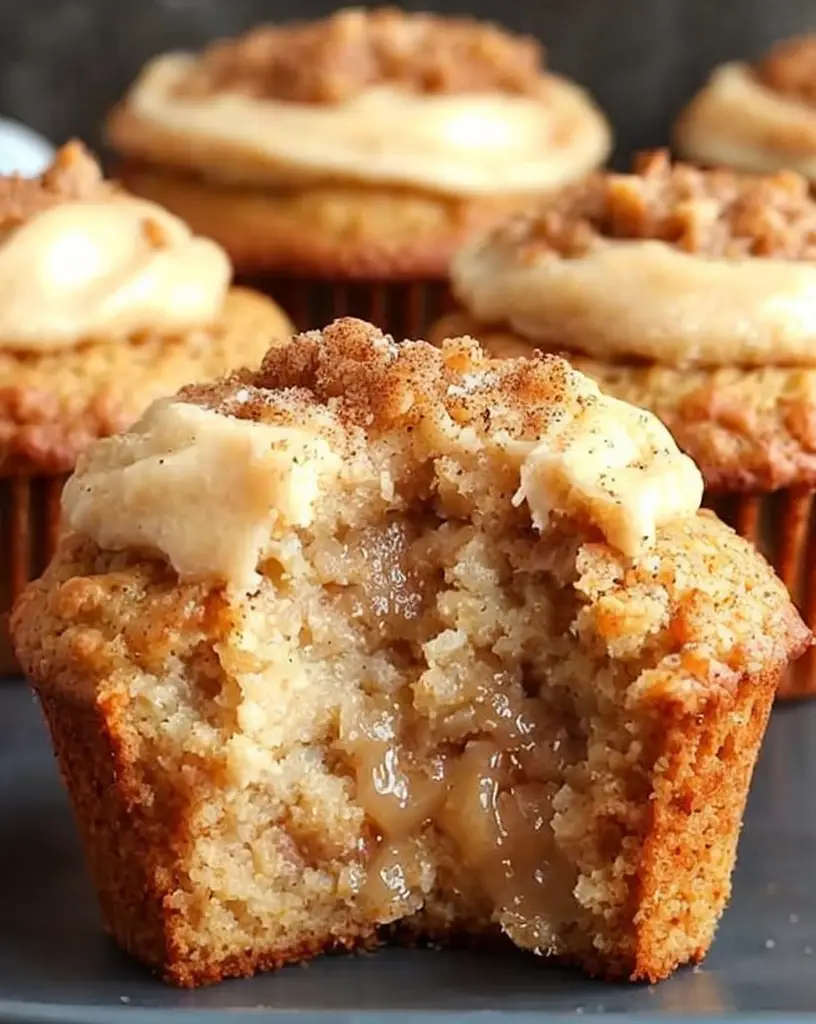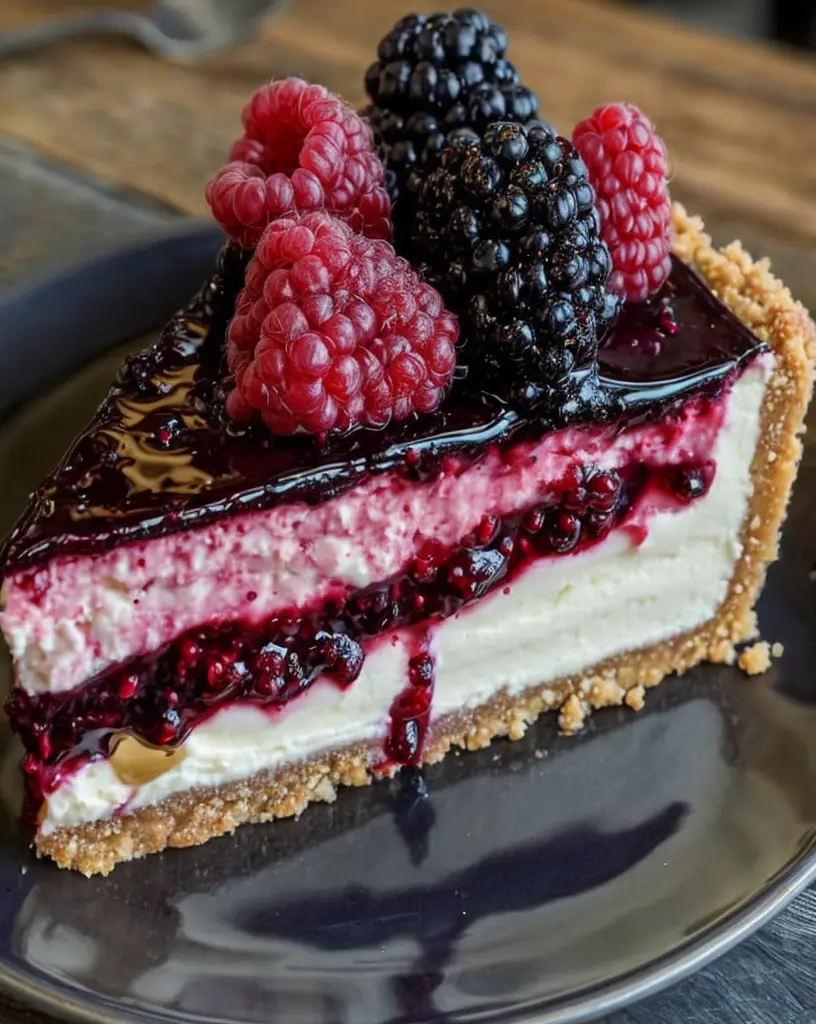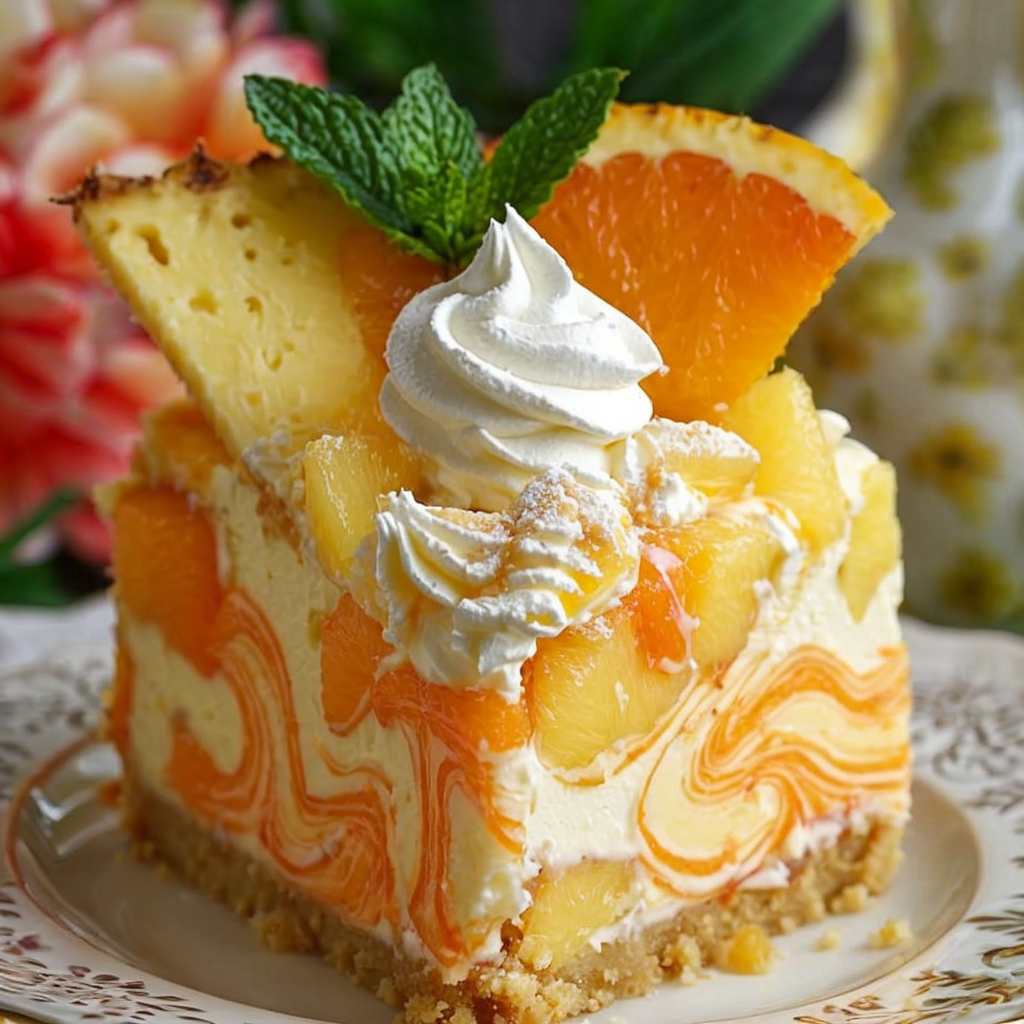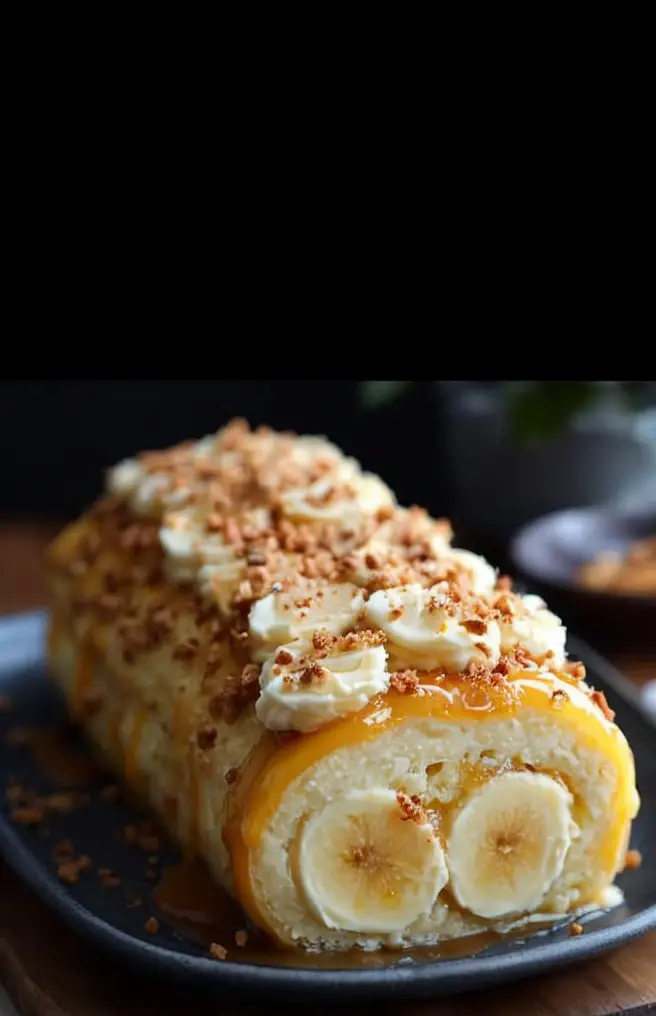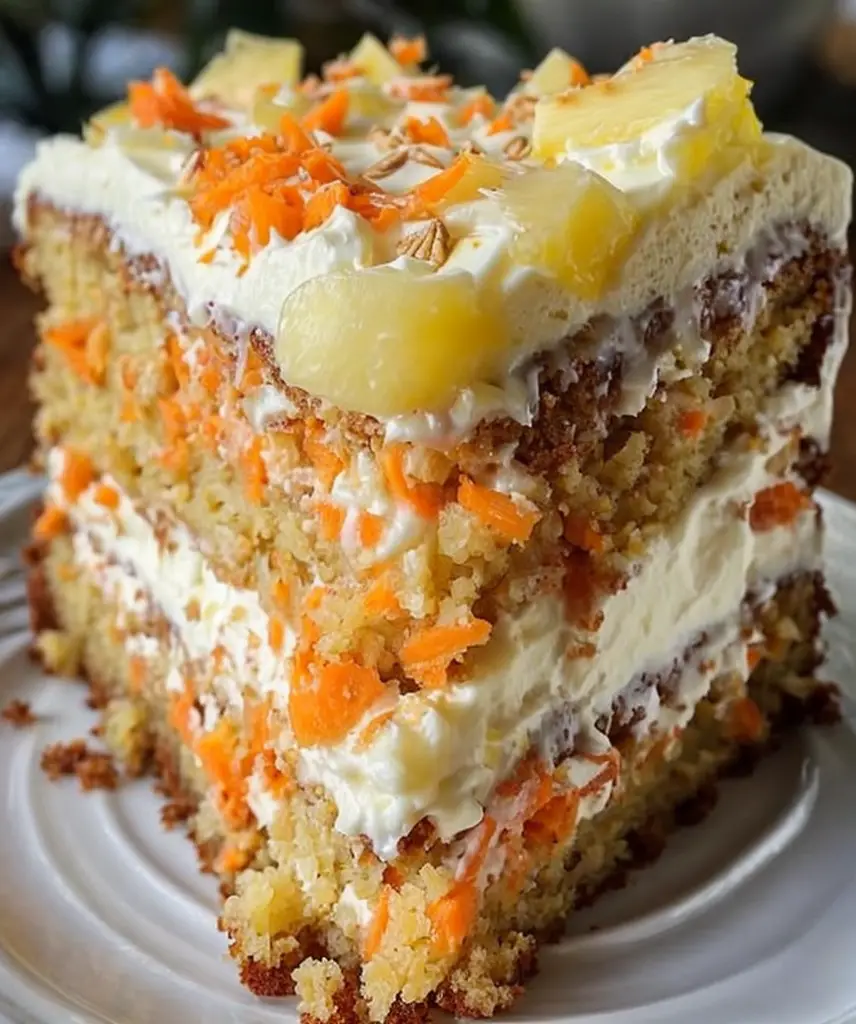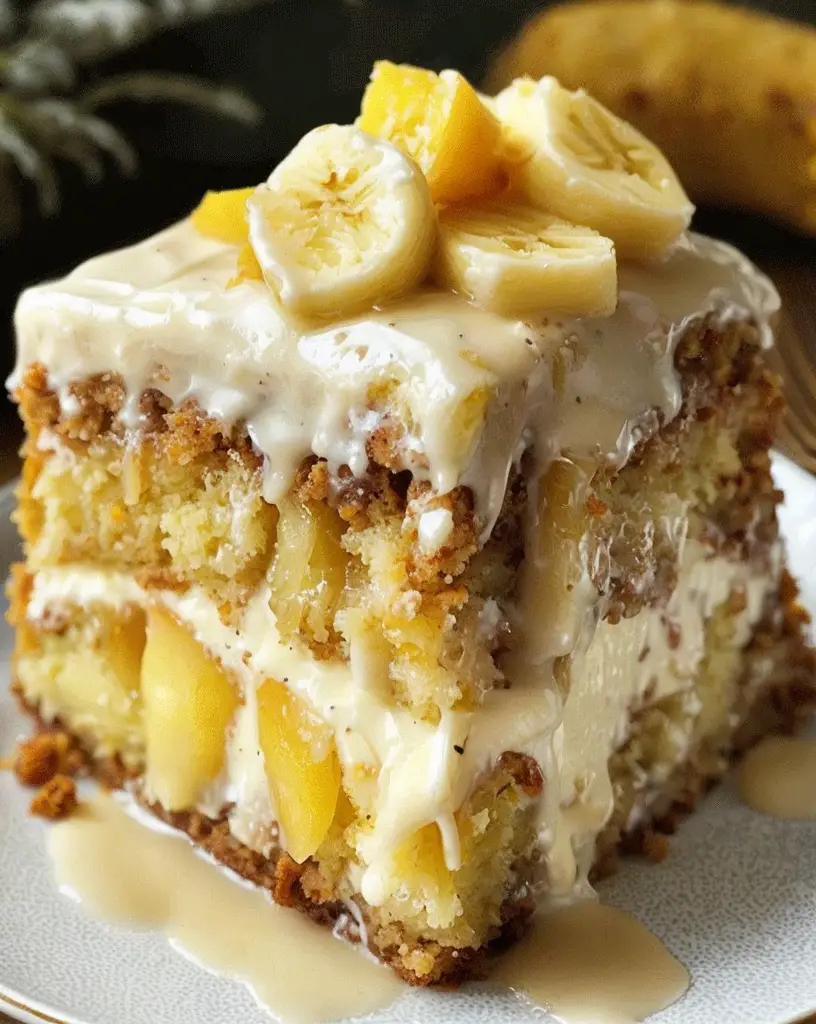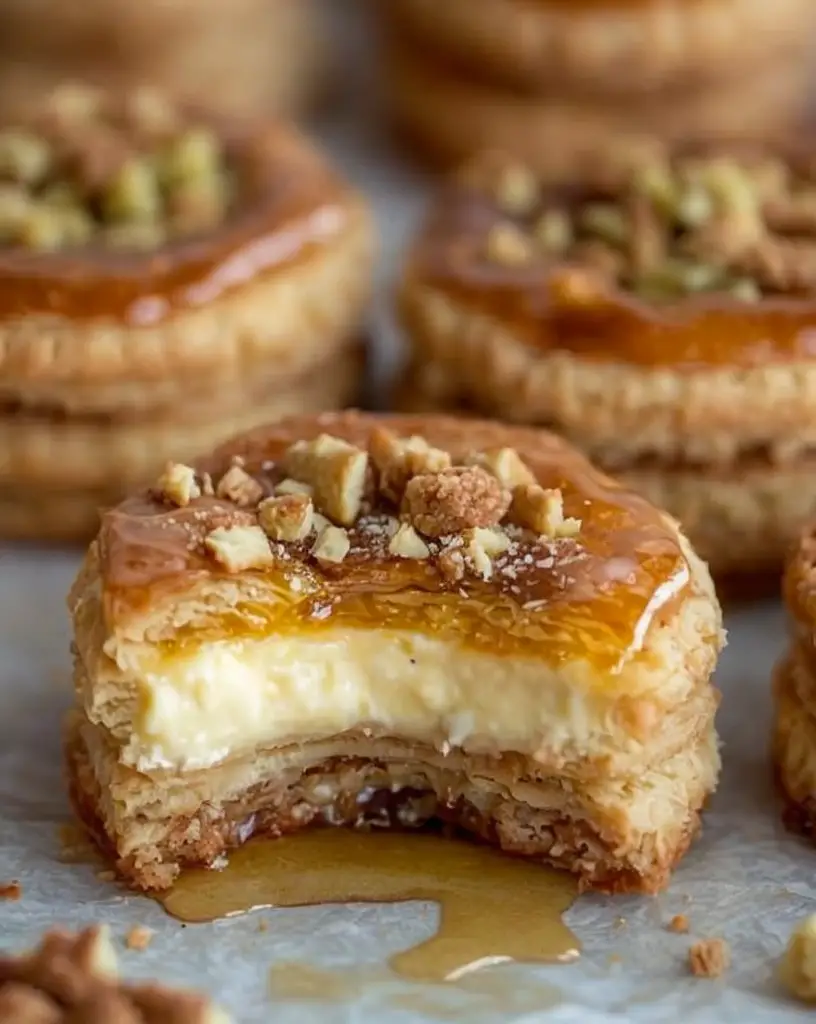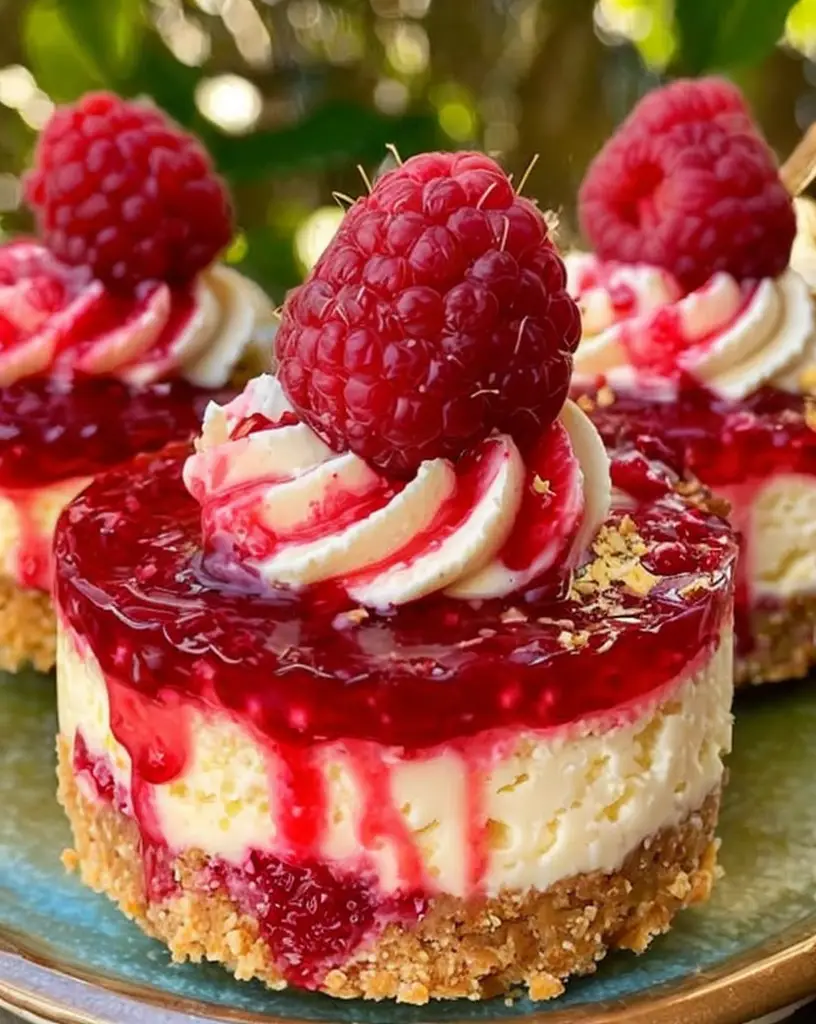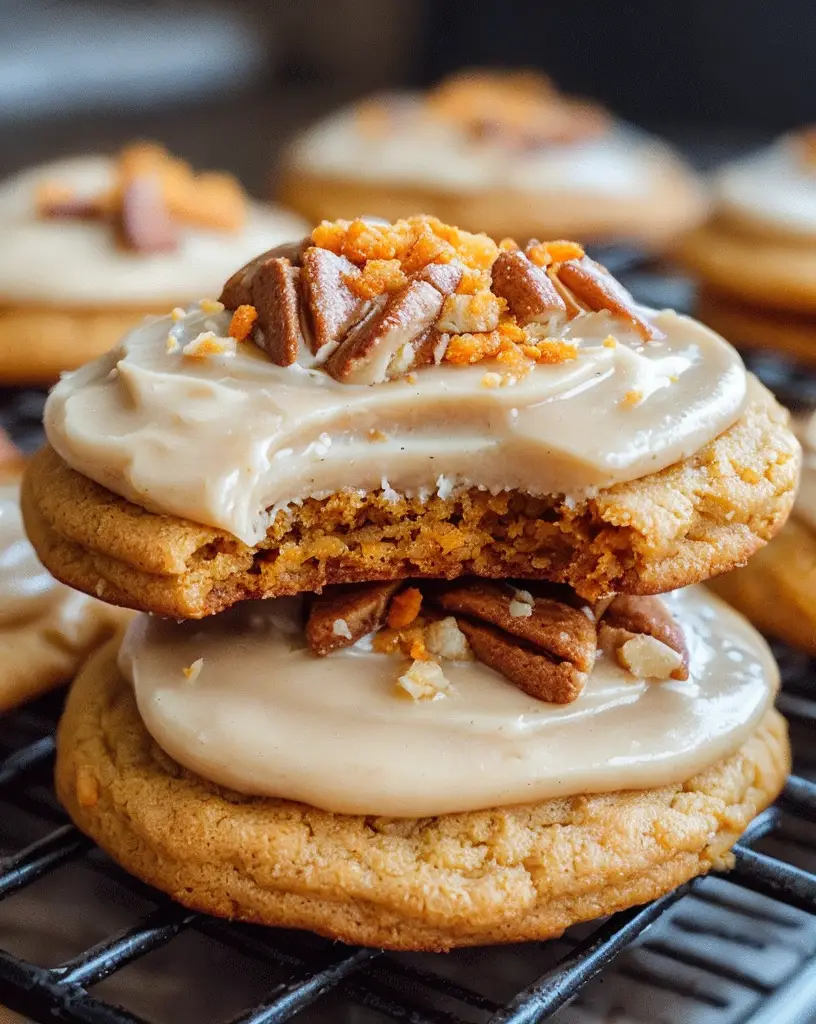Mouthwatering Applesauce Muffins: The Perfect Cozy Treat
Are you looking for a delightful snack that combines the comforting flavors of apples with the warmth of fresh baked goods? Look no further than these Mouthwatering Applesauce Muffins. Bursting with natural sweetness and a hint of spice, these muffins are a perfect companion for coffee in the morning or as an after-school treat. Each bite is tender and rich, promising to envelop your senses with the sweet, fruity aroma that fills your kitchen as they bake.
What makes these muffins stand out is not just their flavor, but their versatility. Whether you enjoy them plain, topped with cinnamon sugar, or even with a drizzle of honey, you’ll find that these muffins can adapt to any palate. The health-conscious will appreciate that they’re made with applesauce, which not only provides moisture and reduces the need for additional fats, but also packs a nutritional punch. These muffins become an instant favorite for family gatherings or a cozy brunch, making your kitchen feel like home.
Quick Recipe Highlights
- Flavor Profile: Sweet and spiced with cinnamon, these muffins feature the delicious taste of fresh apples tempered with nutty accents.
- Texture: Soft and moist, the muffins have a light crumb that melts in your mouth, enhanced by occasional bits of apple.
- Aroma: A warm blend of cinnamon and baked apples wafts through your home, inviting everyone to indulge.
- Visual Appeal: Golden-brown tops sprinkled with sugar create an enticing look that draws everyone in.
- Skill Level Needed: Anyone can make these muffins; they require minimal skills, making them perfect for beginners.
- Special Equipment: Just need standard baking utensils, like a muffin tin and mixing bowls, to whip up this recipe.
Recipe Overview
- Difficulty Level: These muffins are easy to prepare, making them an excellent choice for novice bakers or kids eager to help in the kitchen.
- Category: Perfect for breakfast, snacks, or desserts, these muffins fit a variety of meal times.
- Cuisine: Rooted in Western baking traditions, these muffins reflect a love for seasonal fruits and simple, gratifying foods.
- Cost: With affordable ingredients like flour, sugar, and applesauce, this recipe can be made without breaking the bank.
- Season: Ideal for fall when apples are in peak season, but delicious any time of year.
- Occasion: Great for cozy gatherings, family breakfasts, or even as festive treats during holidays.
Why You’ll Love This Recipe
First and foremost, the taste and texture of these Mouthwatering Applesauce Muffins are irresistible. Rich in flavor with just the right hints of cinnamon and nutmeg, each muffin provides a moist, tender bite that fills the air with a delightful aroma that makes your mouth water. The addition of applesauce not only enhances sweetness but adds a pleasantly fruity background that keeps you coming back for more.
The convenience of this recipe cannot be overstated. With a quick prep time of just 15 minutes, these muffins can be in the oven and baking away while you finish your morning coffee or finish some weekend chores. The straightforward directions mean you can whip them up on a whim, making them a go-to recipe for last-minute gatherings or morning snacks.
Nutritionally, this recipe leverages applesauce as a substitute for oil or butter, significantly cutting down on unhealthy fats. Applesauce is rich in antioxidants, and when combined with whole wheat flour options, these muffins become a healthful snack or breakfast choice, allowing you to enjoy treats without the guilt.
On the social front, these muffins are perfect for sharing. Whether it’s a morning coffee with friends or an afternoon snack for kids, they bring people together. Preparing these muffins can become a family event, encouraging kids to get involved and learn valuable cooking skills, which also makes them excited to enjoy what they’ve helped create.
Last but not least, these muffins are incredibly cost-effective. With pantry staples like flour and sugar alongside simple, inexpensive ingredients such as apples and applesauce, you can create a batch of delightful muffins without a hefty price tag. Their accessibility means everyone can enjoy this comforting treat, regardless of budget.
Historical Background and Cultural Significance
The origins of muffins can be traced back to medieval times, with various interpretations across cultures. The applesauce muffin in particular showcases a distinct American twist, integrating the abundance of apples in the U.S. into traditional muffin recipes. This makes the muffin not just sweet but rich in cultural heritage and collective memories of home baking.
In many households, applesauce muffins became a staple during harvest seasons when apples were plentiful, giving families a warm, nutritious option to utilize the fruit. This recipe encapsulates the essence of comfort food, often associated with gatherings and family time—inviting nostalgia with every bite.
Over time, the muffins have evolved, with many taking on different variations reflecting regional fruits and spices. Adaptations have included adding nuts, changing sweeteners, or even incorporating savory elements, showcasing the creative freedom of home baking while maintaining the core principles of simplicity and warmth.
Today, applesauce muffins are celebrated for their versatility in flavor and texture, finding their place in cafes and home kitchens alike. They remain a symbol of nourishment, comfort, and the joyful act of sharing food with loved ones.
Ingredient Deep Dive
Applesauce serves as the star ingredient in this recipe. Traditionally, it has been used in many cuisines worldwide as a natural sweetener and binder. Nutritionally, applesauce is low in calories yet high in fiber and vitamin C, making it a heart-healthy option that adds natural moisture to baked goods without the need for oil. When selecting applesauce, opt for unsweetened varieties for better control over sweetness levels in your muffins. Proper storage involves keeping it sealed in the refrigerator, where it can last for about a week, or freezing it for longer-term use.
Next on the list is all-purpose flour. This staple ingredient is fundamental in most baking, providing structure and texture. Depending on your dietary needs, whole wheat flour can be a fantastic substitute—it offers more fiber and nutrients than its refined counterpart. When selecting flour, check for freshness to ensure the best results in your baking. Store flour in a cool, dry place, and it can last for several months if sealed correctly.
Common Mistakes to Avoid
- Using too much applesauce: While it’s a great ingredient, using more than the recipe calls for may make the muffins overly dense.
- Not measuring accurately: Baking is a science, and inaccurate measurements can lead to undesirable textures.
- Overmixing the batter: This can lead to tough muffins. Mix until just combined for the best outcome.
- Skipping the resting time: Allowing the batter to rest before baking can yield better results.
- Not checking for doneness: Use a toothpick test to ensure muffins are baked through without being overcooked.
- Using old, stale ingredients: Freshness matters, especially for baking powder and flour.
- Not using liners or greasing the pan: This can cause muffins to stick, making removal difficult.
- Cooling muffins incorrectly: Removing them from the pan too soon can cause them to crumble.
Essential Techniques
Properly creaming butter and sugar is vital to achieving a light and fluffy batter. The process aerates the mixture, leading to muffins that rise perfectly. To master this, beat the mixture on medium speed until it lightens in color and increases in volume. Visual cues include a pale color and light texture.
Correctly folding ingredients is also crucial. When combining wet and dry ingredients, gently fold rather than stir. This technique ensures that air pockets are maintained for a lighter muffin. If the batter looks slightly lumpy, that’s okay—mix until just combined to avoid overworking the gluten in the flour.
Pro Tips for Perfect Mouthwatering Applesauce Muffins
Tip 1: For enhanced flavor, consider adding spices like nutmeg or ginger to the batter—this will elevate the warmth and richness of the muffins.
Tip 2: Use a muffin scoop for uniform portions, ensuring even baking and a professional look.
Tip 3: Experiment with mix-ins like walnuts or dried cranberries to add a unique texture and flavor twist.
Tip 4: Adjust the sweetness by adding a touch of maple syrup or honey, allowing for custom sweetness levels.
Tip 5: For a crunchy topping, sprinkle a mixture of sugar and cinnamon over the muffins before baking.
Tip 6: Allow muffins to cool in the pan for a few minutes before transferring them to a cooling rack, which maintains structure and prevents them from becoming soggy.
Tip 7: Use fresh, seasonal apples if you want to incorporate chunks into the batter for added moisture and taste.
Tip 8: Consider adding a glaze made from powdered sugar and milk for an irresistible finish.
Variations and Adaptations
One regional variation of the applesauce muffin includes the addition of pumpkin puree, offering a seasonal touch with a spicy flavor profile. Alternatively, substituting part of the flour with almond flour adds a nutty flavor while also enhancing the texture for gluten-free enthusiasts.
Seasonal adaptations can significantly change these muffins; for example, incorporating grated zucchini in the summer provides moisture and a nutritional boost!
If you’re looking for dietary modifications, replacing traditional sugars with stevia or monk fruit sweeteners can cater to those who prefer low-sugar options without sacrificing the delightful taste of these muffins.
Texture modifications can be achieved by adding oats to the batter, which gives a heartier bite and boosts the nutritional content.
When it comes to presentation alternatives, consider cupcake liners in festive colors or sprinkling powdered sugar on top just before serving for an attractive finish.
Serving and Presentation Guide
When it comes to plating these muffins, simplicity is key. Place them on a decorative plate, allowing their golden-brown tops to shine. You could sprinkle a dash of cinnamon sugar on top for added flavor and visual appeal.
Garnishing ideas include serving with a dollop of whipped butter or cream cheese spread for an indulgent treat. Accompany them with fresh fruit or a small bowl of honey for a picturesque presentation.
Traditional accompaniments such as coffee or tea enhance the cozy vibe while modern serving suggestions could include a small glass of milk or yogurt for a refreshing contrast.
Temperature considerations are essential; these muffins are best served warm, straight from the oven or lightly reheated. Portion control can be managed by serving them in pairs for brunch-style gatherings.
Wine and Beverage Pairing
When pairing wine, consider a light Riesling or a crisp Chardonnay, complementing the fruity flavors of the muffins beautifully. For those who prefer non-alcoholic beverages, apple or ginger tea would also resonate nicely with the muffin’s flavors.
If coffee is your choice, a smooth cappuccino offers a balanced contrast, providing rich, warm notes that match the muffin’s sweet profile perfectly.
Temperature matters; serve wines chilled while enjoying warm muffins for a delightful tasting experience.
Storage and Shelf Life
To keep your muffins fresh, store them in an airtight container at room temperature for up to three days or in the refrigerator for longer shelf life. Ensure they are completely cooled before sealing to prevent moisture accumulation.
If you want to extend their usability, consider freezing the muffins. Wrap each muffin tightly in plastic wrap and then place them in a zip-top freezer bag. They can last in the freezer up to three months. Reheat in the oven at 350°F for a quick revival that restores their just-baked goodness.
Make Ahead Strategies
Prepping these muffins ahead of time is easy! You can mix dry ingredients the night before and store them in an airtight container. In the morning, simply add the wet ingredients and bake.
During storage between steps, keeping fresh fruit out until you’re ready to mix will ensure they don’t spoil early. Quality is impacted less when ingredients are merged right before baking.
For assembly tips, prepare the batter and let it chill in the fridge for about half an hour; this can enhance the flavor depth and texture.
Reheating these muffins is straightforward; a quick 10-15 seconds in the microwave or a few minutes in the oven can bring back their delightful warmth.
Scaling Instructions
Should you wish to halve the recipe, it’s as simple as cutting each ingredient in half while ensuring that baking time remains generally the same.
Doubling or tripling the recipe for a crowd will require adjustments to your mixing bowl size but not necessarily the baking time—just be cautious of how full the pan is to avoid overflow.
For equipment adjustments, ensure you have enough muffin tins to accommodate larger batches. Using multiple pans may require staggering baking so that they come out perfectly timed.
Storage considerations should account for the volume you produce; larger batches may need divided storage for optimal freshness.
Nutritional Deep Dive
A macro breakdown shows these muffins pack a decent protein punch if made with whole grains, while the carbohydrates come from healthy sources like apples and oats.
On the micronutrient side, expect a boost in fiber and vitamin C from the applesauce while incorporating whole grains adds B vitamins and iron—important nutrients for overall health.
Health benefits of this recipe include heart-healthy fats from any optional nuts, while also facilitating digestive health through the soluble fiber contributed by apples and oats.
Dietary considerations are easily customizable with various flour choices, allowing those on specific diets to adjust the ingredients according to their nutritional needs.
This muffin recipe can serve as an excellent snack for weight management, providing a filling option that satisfies sweet cravings without excessive calories.
Dietary Adaptations
For gluten-free adaptations, utilize almond flour or a gluten-free flour blend to maintain texture while accommodating dietary restrictions.
To create a dairy-free version, substitute any dairy components like butter or milk with plant-based alternatives without losing flavor.
Vegan adaptations can be made by replacing eggs with a flaxseed or chia seed mixture, ensuring the muffins rise properly while maintaining plant-based ingredients.
Low-carb options are possible by using almond flour combined with sugar substitutes to keep carb counts down.
Keto enthusiasts can also utilize erythritol to substitute sugar, creating a muffin that fits well within carbohydrate limits.
Paleo followers will appreciate this recipe with simple substitutions, omitting refined sugars and grains in favor of natural sweeteners and coconut-based flours.
Low-FODMAP followers should consider optional ingredients carefully, picking those compatible to maintain gut health.
Troubleshooting Guide
If you encounter texture issues where muffins are too dense, ensure proper measurement and avoid overmixing the batter. Incorporating more baking powder may help lift them as well.
In terms of flavor balance, if your muffins taste too bland, consider increasing the amount of cinnamon or adding vanilla extract; these flavors meld beautifully with apples.
Temperature problems such as muffins not baking through may be a sign of oven inconsistencies; using an oven thermometer can help ensure your baking temperature is accurate.
Equipment challenges like not having a muffin pan can easily be addressed by using cases made from parchment paper or silicone molds.
Ingredient substitutions can lead to unwanted flavors; always make one change at a time to evaluate impact before further alterations.
Timing concerns, especially during busy mornings, can be alleviated by preparing a batch of muffins to freeze ahead of time for a quick breakfast solution.
Recipe Success Stories
Community feedback often highlights how versatile these muffins can be—everyone seems to love the ability to add their own twist! From nuts to dried fruits, adaptations offer a personal touch that makes the recipe feel unique.
Variation successes are often shared, with readers posting photos of their beautifully baked muffins that spark inspiration for others to try new things.
Adaptation stories tell of families coming together to create their versions of these muffins, leading to bonding moments over the delicious aroma floating from the kitchen.
Recipe reviews consistently point to how easy and foolproof the process is, encouraging even novice bakers to step into the kitchen confidently.
Photography tips emphasize the golden color and texture; capturing the muffins in their rustic state highlights their homemade charm and invites others to indulge.
Frequently Asked Questions
Absolutely! You can replace applesauce with finely chopped fresh apples. Just ensure you adjust the moisture by adding a tablespoon or two of additional liquid if needed.
Q2: How do I keep my muffins moist?
To maintain moisture, avoid overbaking and make sure to store them in an airtight container. Adding ingredients like yogurt can also provide extra moisture.
Q3: Can I make these muffins ahead of time?
Yes, you can prepare the batter in advance and keep it in the fridge. However, it’s best to bake the muffins fresh; if baked ahead, they can be stored for up to three days.
Q4: What’s the best way to reheat muffins?
The best way to reheat muffins is by placing them in a preheated oven at 350°F for about 5-10 minutes or microwaving them for about 10 seconds.
Q5: Can I add nuts or chocolate chips?
Yes! Feel free to add nuts, chocolate chips, or any other mix-ins to elevate your muffins. Just make sure not to overdo it to keep the batter balanced.
Q6: How can I make these muffins vegan?
You can make these muffins vegan by substituting eggs with a flaxseed meal mix or applesauce, and using non-dairy milk instead of regular milk.
Q7: What are the signs that the muffins are done baking?
The muffins are finished when the tops are golden and a toothpick inserted into the center comes out clean or with a few moist crumbs attached.
Q8: Can I freeze the muffins?
Yes, muffins freeze wonderfully! Wrap them tightly in plastic wrap and store them in a freezer-safe bag. They can last for up to three months.
Q9: How should I store leftover muffins?
Store leftover muffins in an airtight container at room temperature for up to three days or in the refrigerator to extend their freshness.
Q10: Can I substitute other fruits in this recipe?
Certainly! You can replace applesauce with other fruit purees like pumpkin, banana, or pear for different flavor profiles while maintaining the recipe’s integrity.
Additional Resources
For those inspired by this recipe, check out related recipes on my blog that highlight autumn flavors, such as pumpkin bread or spiced pear muffins. These seasonal ideas are not only comforting but also change your palettes throughout the year. Furthermore, explore technique guides on mixing and baking cakes to refine your baking skills.
Ingredient information for apples can enhance your understanding of seasonal fruits and their various usages in baking. For those looking to invest in kitchen tools, recommended equipment lists can help elevate your baking experience, making the process more enjoyable and efficient.
Seasonal variations can always breathe new life into classic recipes. Consider fresh cranberries for a winter delight or fresh strawberries in the summer—adaptability is key to keeping your baking exciting!
Join the Conversation
I’d love to hear from you! Share your photography and adaptations of these Mouthwatering Applesauce Muffins on social media. Tag me in your posts, and don’t hesitate to leave comments about your experiences along with any variations you’ve tried. Engaging with community tips can enrich our baking journeys, allowing us to refine this delightful recipe together. Join in the conversation and inspire others to whip up these tasty creations!
The Recipe
Mouthwatering Applesauce Muffins
Serves: 12 muffins
Prep Time: 15 mins
Cook Time: 20 mins
Total Time: 35 mins
Kitchen Equipment Needed
- Muffin tin
- Mixing bowls
- Measuring cups and spoons
- Whisk or mixer
- Spatula
Ingredients
- 1 cup applesauce
- 1/2 cup sugar
- 1/3 cup vegetable oil
- 2 large eggs
- 1 1/2 cups all-purpose flour
- 1 teaspoon baking soda
- 1 teaspoon cinnamon
- 1/2 teaspoon salt
- 1/2 teaspoon vanilla extract
- Optional: 1/2 cup chopped walnuts or chocolate chips
Directions
- Preheat the oven to 350°F (175°C) and line a muffin tin with paper liners.
- In a large bowl, mix together the applesauce, sugar, oil, and eggs until well combined.
- In a separate bowl, whisk together the flour, baking soda, cinnamon, and salt.
- Gradually add the dry ingredients to the wet mixture, stirring gently until just combined. Do not overmix.
- If desired, fold in chopped walnuts or chocolate chips.
- Fill each muffin cup about two-thirds full with batter.
- Bake for 20-25 minutes, or until a toothpick inserted in the center comes out clean.
- Allow muffins to cool in the pan for 5 minutes before transferring to a wire rack to cool completely.
Recipe Notes
- Feel free to substitute applesauce with any fruit puree for varied flavor.
- For an extra crunch, top the muffins with a sprinkle of cinnamon sugar before baking.
- Your choice of mix-ins can personalize these muffins; consider fresh berries or other nuts.
